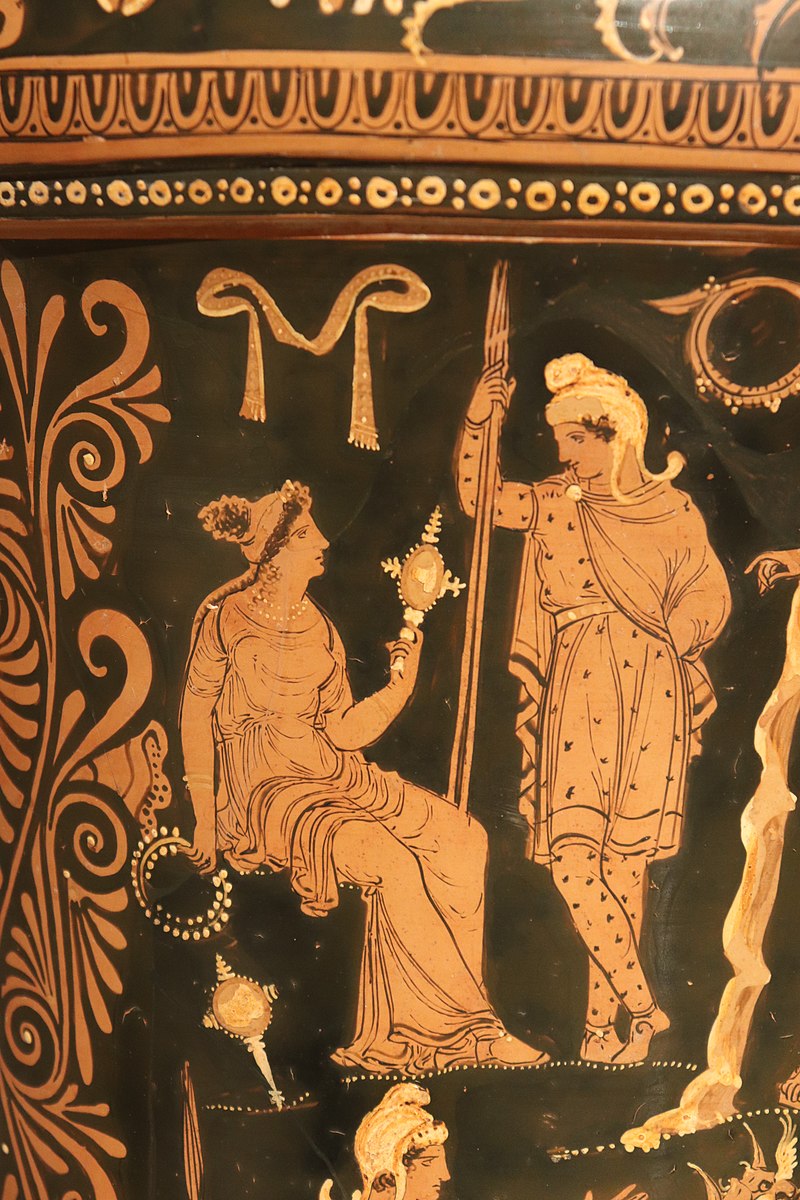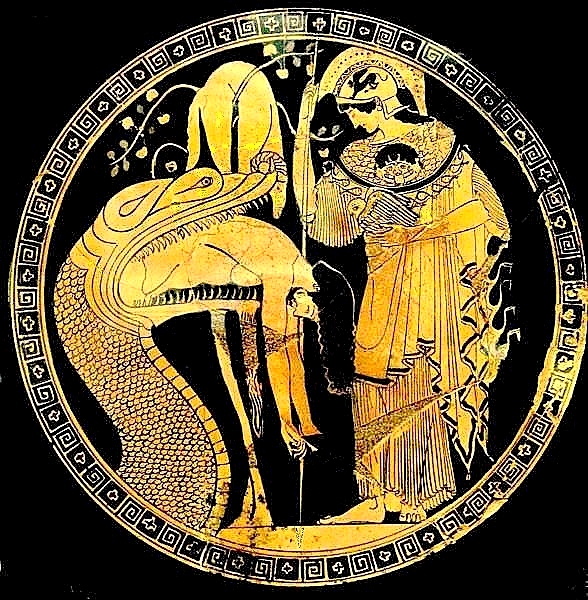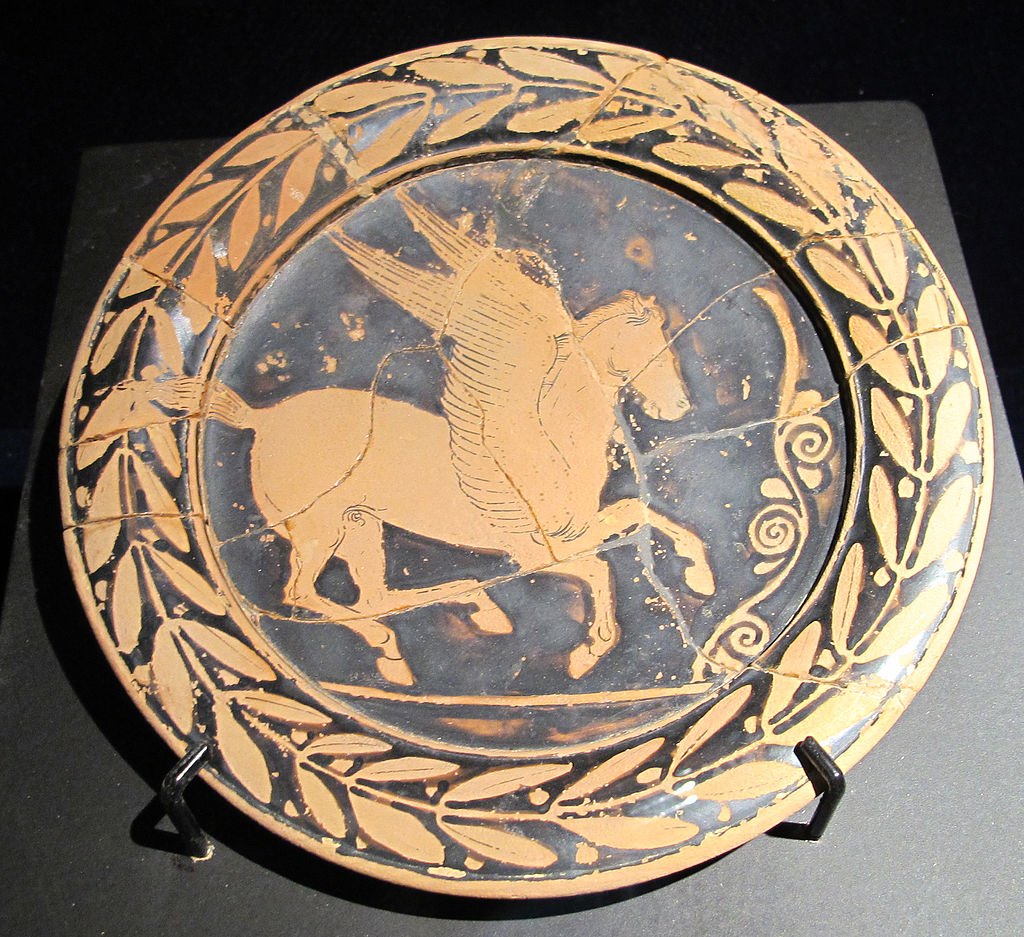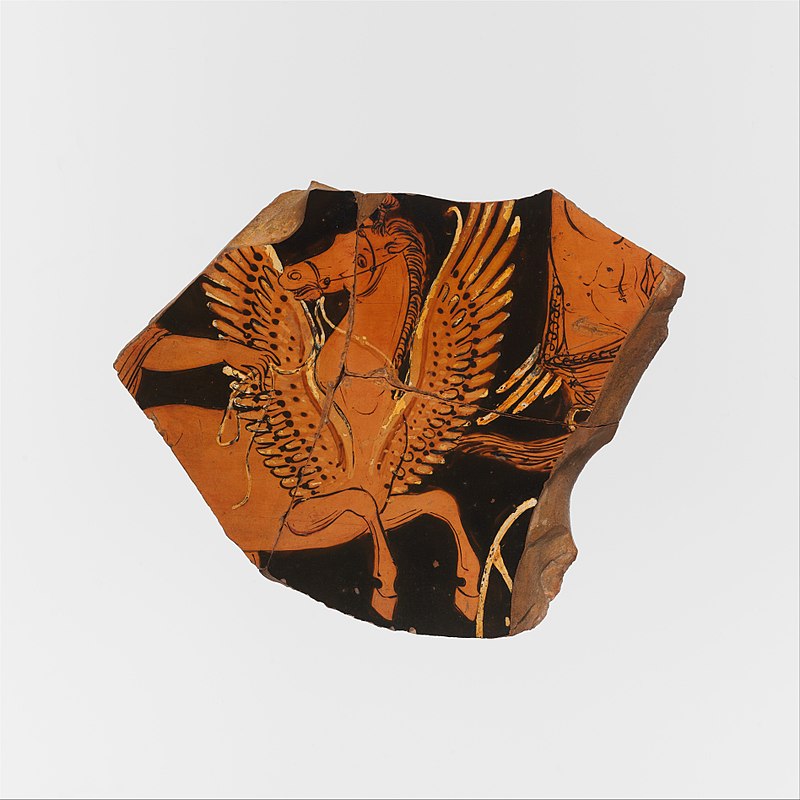Salvete Omnes,
Spring is approaching fast as time flies - we should have the new year start on the Spring Equinox - like the ancient nomads and ancient Iranians had had.
 |
| Gorgon chasing after Perseus |
Ad rem,
I love ancient Greek myths - and today decided to share some images related to the myth (well, collection of myths ) about the ancient hero named Perseus or the destroyer. Why Perseus, well, he is credited as the hero releasing the fabulous winged horse of the myths - Pegasus.
 |
| Hermes giving Perseus a curved sword |
Unwed Danae of Argos, daughter of king Acrisius, was the mother of Perseus while his father was the mighty and thundering Olympian god Zeus (in form of the Shower of Gold or Golden Shower).
 |
| Zeus as Shower of Gold coming to Danae |
Danae and her son were banished from Argos by her father, sealed in a wooden casket and he had them thrown out into the sea.
After two days hey were
fished out of the sea by Dictys (netman or fisherman), bother of king
Polydectes (much-receiver or Death) of Seriphos (island of the Cyclades). From that island he set
our on his hero quest. The quest was prompted by the king Polydectes, lusting after Danae, who demanded that every young men on his island provide him with a horse needed as a wedding gift for his intended marriage to Hippodamia (daughter of Oenomaus, famous for his chariot horses and chariot races). Perseus was too poor to own a horse so he boasted that he could find and slay a Gorgon monster. And as a result of his boast he set out on his quest.
Since Perseus was a mortal son of his Olympian god father, then his Olympian half-brothers and half-sisters would eventually come to his aid and provide him with magic items to help him achieve his hero quest: a cap of Hades (making the wearer invisible), winged sandals allowing him to fly, polished bronze shield, a curved sword, and a leather bag.
So this Perseus' hero quest involved searching for, finding and eventually slaying the Gorgon monsters, there sisters - Stheno (strength) , Euryale (far-leaper), and Medusa (wide-ruling). The most dangerous was Medusa, who once had been a beautiful girl and became the victim of Poseidon's lust and ravishment, and Medusa had the evil power to turn humans and animals into stones (petrifying them) just by looking with her eyes.
Perseus, with his cunning, bravery, courage, and skills and magic tools, searched, found and slayed all there Gorgons, and used Medusa's head to carry on his other heroic deeds, including the defeating of the Poseidon's monster bound to devour princes Andromeda.
 |
| Perseus freeing beautiful Andromeda |
 |
| Perseus and Andromeda |
Eventually, Andromeda and Perseus married and had children, and hero Heracles was one of their descendants. Perseus gave the Gorgon Medusa head to his half-sister goddess Athena, who carried it on her shield.
Finally, about Pegasus and his coming to the world - when Perseus slayed Medusa by cutting her head, the monster carried her children conceived during the ravishment by Poseidon - winged horse Pegasus and a giant Chrysaor, and these unlikely 'twin' children finally left her body via her neck. Thus Pegasus flew into the skies and the legend. Not much is known about Chrysaor.
You can easily look for books available on the archive world library - eg. borrowing Early Greek Myth by Timothy Ganz, or the classic telling The Greek Myths by Robert Graves.
enjoy
Valete








1 comment:
Joseph Campbell on Archive (1972 copy) - https://archive.org/details/herowiththousand0000camp_y9a7
and the 1940s copy - can be all borrowed https://archive.org/details/herowiththousand0000unse
Post a Comment